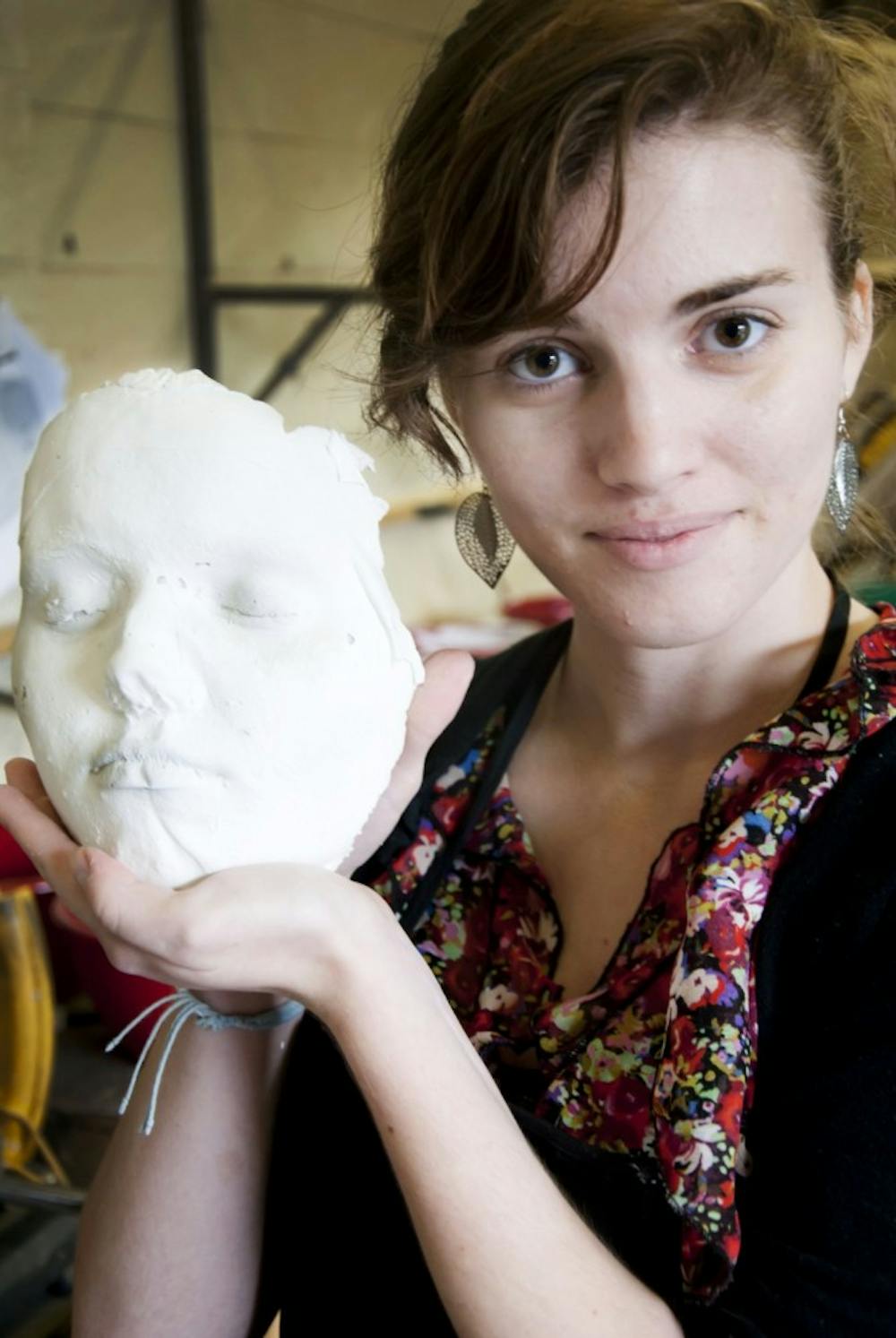Chip Johnson had his first encounter with using masks and prosthetic pieces in order to become a 78-year-old headmaster in an original play called "Bippus, A, Um" when he was an undergraduate at Rollins College.
A few decades later, Johnson, who now works at Elon as an adjunct assistant professor of performing arts, followed his fascination with makeup design to teach classes on the subject. Students in his advanced makeup class are making their own "death masks."
"This is the first time we've had the advanced makeup class," Johnson said. "I teach the fundamentals in my first class and this is really the next step."
This next step requires students to create masks by making a plaster cast of their face and using the death mask as a foundation for making prosthetics out of latex pieces so they can create characters.
"'Death mask' is just a term that's been used," Johnson said. "When you see the actual mask with the eyes closed, there is this kind of lifeless sense to it, hence the nickname."
The students' final project will be to design a character of their choice and use the prosthetic pieces to create their final design. Junior Rachel Jones said she hasn't decided what look to go for with her mask yet, but she's excited about the wide range of possibilities.
"We've been working on an old age project so I'll probably do something for that," Jones said. "I can also do some crazy things, like make a beak for myself or hobbit ears."
The opportunities for creativity in the advanced class is what sets it apart from the beginner class, Johnson said.
While the first class teaches basic aspects of makeup design such as correctional makeup, scars and bruises and fantasy makeup, the advanced class takes it a step further by using prosthetic pieces to be more creative with designs.
"We're looking at different styles," Johnson said. "It's a matter of having more tools in the toolbox for the makeup artist to be able to utilize."
The skills of a makeup artist come in handy in the realm of theatre by helping with the characterization of an actor's role, giving artists a significant role on set.
"As a designer, I think it's important for them to make the considerations that are given from the circumstances of the play," Johnson said. "(They have to) help clarify things about the character, such as where they're from and their age."
As for the current project, Johnson said he was happy to see his students jump in and get involved right from the start, even though the mask making process can be difficult, especially when making the plaster cast of each person's face.
"I wasn't sure exactly what to expect, so I was kind of nervous, but it was fine," Jones said. "As long as you relax, there are no problems. You just can't move your face and you have to keep your eyes tightly shut or else it can cause cracks in the mask."
Johnson hopes to offer the advanced class again in the future, and he would like to continue to do specialty projects, such as examining special effects with makeup design. But for now, he's content with a successful first attempt at teaching students the art of mask making.
"They have all seemed to be very enthusiastic about the project and the process," he said. "I'm pleased with how it's gone so far"


